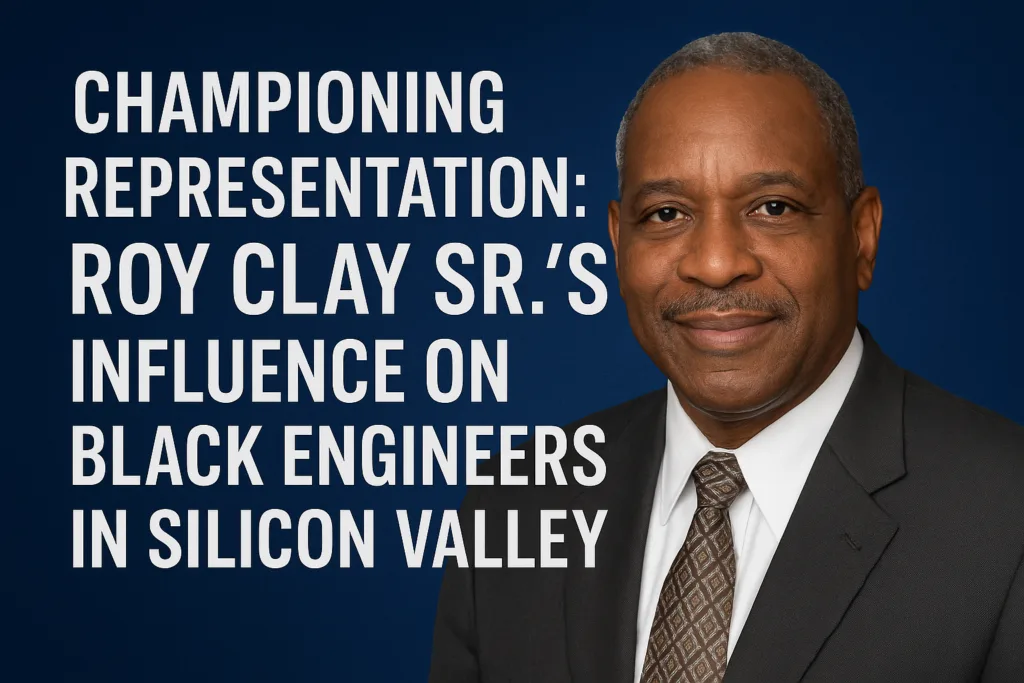Silicon Valley has long been seen as the epicenter of global innovation. Yet for much of its history, the faces shaping that innovation were not representative of the broader American population. In the midst of this imbalance, Roy Clay Sr. emerged not only as a brilliant engineer but also as a trailblazer who championed the representation of Black engineers in the heart of the tech industry. His legacy is not simply about his pioneering work with computers, but also about opening doors that had been shut for too long.
At RLC Publications, we recognize that telling Roy Clay Sr.’s story means shining light on both his extraordinary technical contributions and his determination to ensure that others could follow in his footsteps.
Breaking Barriers in a Segregated Era
Roy Clay Sr. grew up in the racially segregated town of Kinloch, Missouri. In the mid-20th century, opportunities for Black youth in science, mathematics, or engineering were scarce. Yet Clay’s determination to pursue education positioned him to break barriers. After earning a degree in mathematics, he entered the world of computing at a time when very few African Americans were present in the industry.
Clay’s presence alone was revolutionary, but it was his determination to make representation the norm—not the exception—that set him apart. He understood that systemic change required not only personal achievement but also advocacy.
A Pioneer at Hewlett-Packard
In the 1960s, Roy Clay Sr. joined Hewlett-Packard (HP) and played a pivotal role in developing the company’s first computer, the HP 2116A. While his engineering achievements were groundbreaking, his work as a recruiter and advocate for diversity at HP was just as important.
At a time when major technology companies largely overlooked minority candidates, Clay made it his mission to actively recruit talented Black engineers and mathematicians. He recognized that the success of Silicon Valley could not be sustained without broadening its talent pool. His efforts helped diversify HP’s engineering teams and, more importantly, set an example for how tech companies could build more inclusive workplaces.
The Power of Representation
Representation in technology matters for more than symbolic reasons—it shapes innovation itself. Diverse teams bring different perspectives, question assumptions, and push boundaries in ways homogenous groups rarely do. Roy Clay Sr. understood this long before “diversity in tech” became a widely discussed issue.
By championing the hiring of Black engineers at HP and beyond, Clay helped dismantle the false notion that innovation was the sole domain of one demographic. His advocacy made a statement: talent exists everywhere, but opportunity must be unlocked.
Mentorship and Community Impact
Beyond corporate halls, Roy Clay Sr. also invested in mentorship. He knew that success in Silicon Valley could be isolating for those who looked like him, so he took time to guide others. Many engineers who came after him cite his encouragement and mentorship as critical to their careers.
Clay’s community engagement extended outside of technology as well. Serving on the Palo Alto City Council, he became one of the few Black leaders to hold public office in a region dominated by rapid economic growth and stark inequality. His civic work underscored a lifelong commitment to representation in all spaces—political, social, and technological.
Founding ROD-L Electronics
In 1977, Roy Clay Sr. founded ROD-L Electronics, a company specializing in safety testing equipment for electrical products. The company’s success demonstrated his entrepreneurial spirit and reinforced the importance of Black leadership in industries where it had long been absent.
The very act of establishing his own company in Silicon Valley served as a form of representation. It showed aspiring Black engineers and entrepreneurs that they, too, could innovate, lead, and create companies in a competitive landscape.
Lessons for Today’s Tech Industry
More than half a century after Roy Clay Sr. first made his mark, the tech industry continues to grapple with diversity and inclusion. Black engineers and entrepreneurs remain underrepresented in Silicon Valley, a reality that makes Clay’s story all the more relevant today.
Here are some lessons modern companies can draw from his example:
-
Active Recruitment: Like Clay did at HP, companies must go beyond passive diversity initiatives and actively seek out underrepresented talent.
-
Mentorship Programs: Building networks of support is crucial for career development and long-term retention.
-
Representation in Leadership: Having diverse voices at the decision-making level influences not just hiring but also product design, company culture, and community engagement.
-
Civic Responsibility: Clay’s role as a councilman highlights the importance of connecting corporate success with community investment.
A Legacy That Lives On
Today, Roy Clay Sr. is remembered as the “Godfather of Black Silicon Valley.” This title is not just a reflection of his technical brilliance, but of his unwavering belief that diversity strengthens innovation. Every Black engineer who enters the tech world today walks a path that Clay helped clear.
At RLC Publications, we believe stories like his must be told, retold, and celebrated. They remind us that progress is made not only through invention, but also through courage, advocacy, and the commitment to leave doors open for others.
Conclusion
Roy Clay Sr.’s influence extends far beyond his work on early computers. He redefined what it meant to be a pioneer—not just by building machines, but by building opportunities for people. In championing representation, he transformed Silicon Valley from within and left a blueprint for companies striving to create truly inclusive environments today.
His story is a testament to the power of resilience, vision, and advocacy. For the next generation of engineers, entrepreneurs, and leaders, Roy Clay Sr.’s legacy stands as both an inspiration and a challenge: to innovate not only with technology but with equity.


